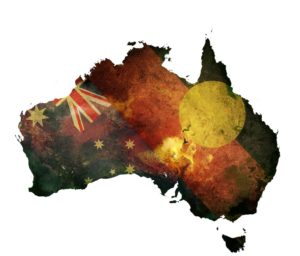
Connection to country, culture and community is intrinsically linked to teaching and retaining Indigenous languages, a Flinders University communications expert says.
Flinders University Emeritus Professor Andrew Butcher, who has been researching Aboriginal languages of Australia for more than 30 years, highlights the importance of preserving First Nations language, including pronunciation and other details in a recent paper in three Central Australian languages.
“Across all of Australia’s Indigenous languages, the most important message is that these languages need to be recorded before they disappear – as so many have done already – and, where possible, supported and revived in the communities where they belong,” says Professor Butcher.
August 9, the annual International Day of Indigenous Peoples 2021, warns the COVID-19 pandemic is exposing more than 476 million indigenous peoples in 90 countries to further inequities from poverty, illness, discrimination, and other instability.
The pandemic follows centuries of marginalisation and a set of different vulnerabilities affecting the health and wellbeing of indigenous peoples around the, the UN annual International Day of Indigenous Peoples warns.

Indigenous peoples are the holders of a vast diversity of unique cultures, traditions, languages and knowledge systems. Despite these difficulties, indigenous peoples have demonstrated extraordinary examples of good governance, ranging from the Haudenosaunee to the National Congress of Australia’s First Peoples.
Professor Marija Tabain, from La Trobe University, the lead author in the recent article in The Journal of the Acoustical Society of America, researches the articulatory and acoustic phonetics of several different languages including the Central Australian languages Arrernte, Pitjantjatjara and Warlpiri.
“Our study of consonant articulation among 21 speakers of these three neighbouring Central Australian languages highlights the unique use of language and subtle differences between the users,” she says.
“Literacy plays a major role in maintenance of marginal phonemic contrast,” the researchers conclude.
Gavan Breen OAM from the Institute for Aboriginal Development in Alice Springs, and Professor Richard Beare from Monash University, were also involved in the study, engaging with several members of Arrernte, Pitjantjatjara and Warlpiri communities in the Northern Territory and northern South Australia.

“This ongoing research is increasingly confirming the uniqueness of Aboriginal languages, particularly as regards their sound systems and range of articulations,” says Professor Butcher, who is also an expert in articulation and communication disorders.
He says the development of Indigenous Australian languages – among the oldest surviving languages on the planet – may also help inform contemporary studies and “tell us more about human languages in general”.
Professor Butcher and the late John McEntee have also recently published a detailed analysis on the complexities of the Adnyamathanha language.
The monograph in Phonology of Adnyamathanha underscores the close connections between the Adnyamathanha Thura-Yura language spoken in the northern Flinders Ranges of South Australia to the people’s long history and culture, Professor Butcher says.
The article, A formant study of the alveolar versus retroflex contrast in three Central Australian languages: Stop, nasal, and lateral manners of articulation (2021) by Marija Tabain, Andrew Butcher, Gavan Breen and Richard Beare, has been published in the prestigious The Journal of the Acoustical Society of America DOI: 10.1121/10.0001012 https://doi.org/10.1121/10.0001012
Acknowledgements: The Journal of the Acoustical Society of America article was supported by the Australian Research Council funding.

